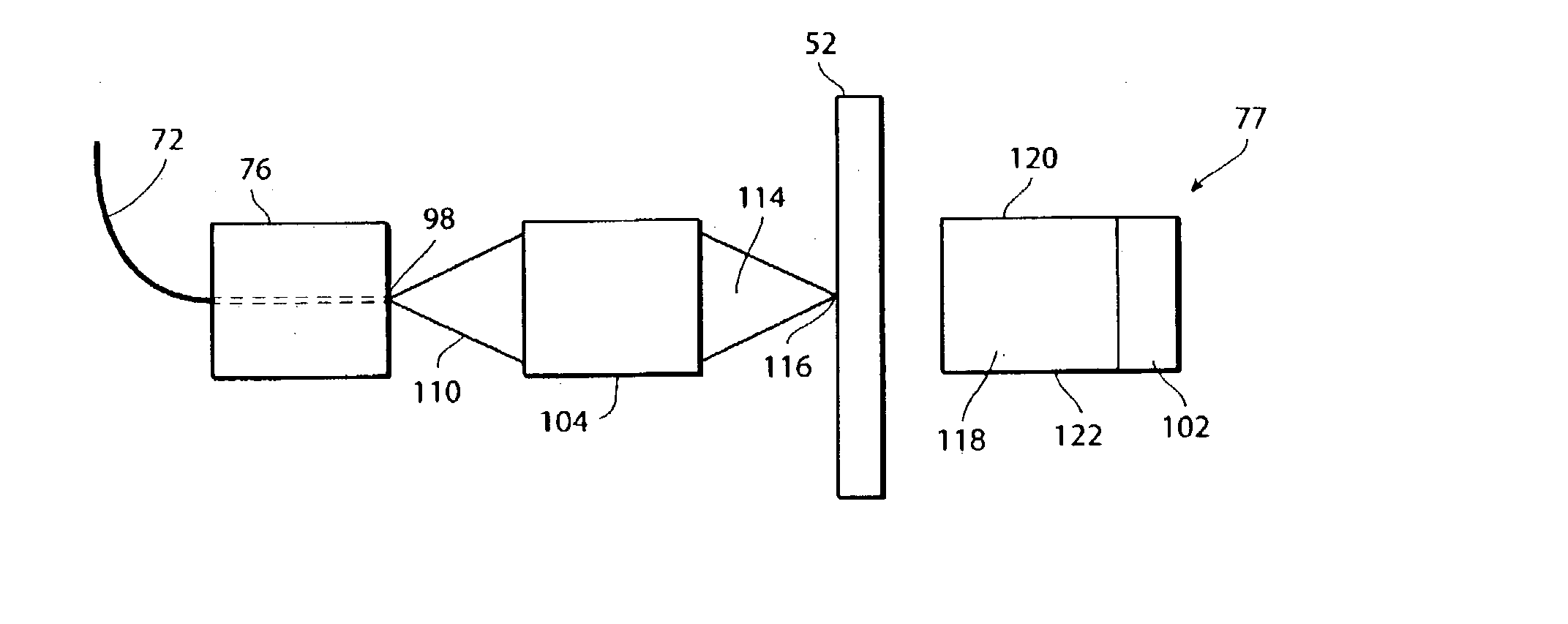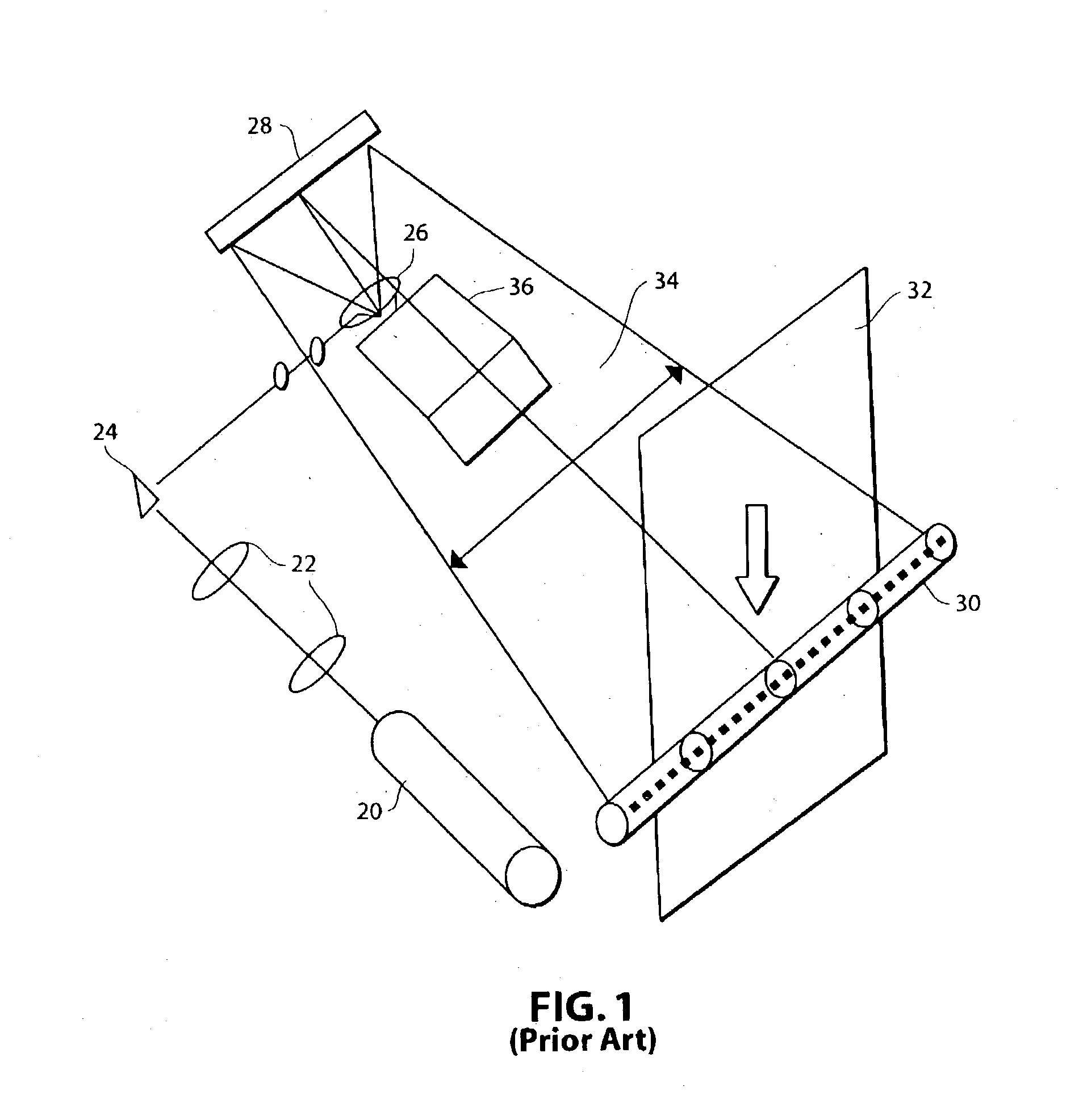Light receiving and detection system for reading a radiographic image
a detection system and radiographic image technology, applied in the direction of optical radiation measurement, instruments, photometry, etc., can solve the problems of impending image interpretation and treatment based thereon, physicians on the ship may not have the necessary capability to review such radiographic images generated, and hospitals and physicians located in small towns do not have immediate availability, etc., to achieve excellent optical path and accurate reproduction of image pixel values on the substra
- Summary
- Abstract
- Description
- Claims
- Application Information
AI Technical Summary
Benefits of technology
Problems solved by technology
Method used
Image
Examples
Embodiment Construction
[0057] Referring now in more detail and by reference characters to the drawings, reference will initially be made to FIG. 1, which shows a typical prior art laser scanning system for scanning radiographic images. FIGS. 2-16 of the application more particularly relate to the apparatus and the method of the present invention.
[0058] Referring in more detail to FIG. 1, it can be observed that the prior art laser scanning systems generally rely upon a gas laser 20, including a plurality of condensing lenses 22, and a prism 24 directing light to a conical prism 26, and a folding mirror 28. That light from the mirror 28 is then directed to a photomultiplier detector 30. However, the light passes through the radiographic film substrate 32 and will thereupon provide a reading of the light and dark areas to the photomultiplier detector 30. The scanning beam generated at the folding mirror 28 is represented by the path 34. Moreover, a galvanometer 36 must be used in this arrangement to control...
PUM
 Login to View More
Login to View More Abstract
Description
Claims
Application Information
 Login to View More
Login to View More - R&D
- Intellectual Property
- Life Sciences
- Materials
- Tech Scout
- Unparalleled Data Quality
- Higher Quality Content
- 60% Fewer Hallucinations
Browse by: Latest US Patents, China's latest patents, Technical Efficacy Thesaurus, Application Domain, Technology Topic, Popular Technical Reports.
© 2025 PatSnap. All rights reserved.Legal|Privacy policy|Modern Slavery Act Transparency Statement|Sitemap|About US| Contact US: help@patsnap.com



